Wat Rong Khun
Wat Rong Khun, better known as “the White Temple” is one of the most recognizable temples in Thailand. The temple outside the town of Chiang Rai attracts a large number of visitors, both Thai and foreign, making it one of Chiang Rai’s most visited attractions.
Wat Rong Khun is a unique temple that stands out through the white color and the use of pieces of glass in the plaster, sparkling in the sun. The white color signifies the purity of the Buddha, while the glass symbolizes the Buddha’s wisdom and the Dhamma, the Buddhist teachings.
The Wat Rong Khun was designed by Chalermchai Kositpipat, a famous Thai visual artist. To date the temple is not finished. Eventually there will be nine buildings including an ubosot, a hall to enshrine Buddhist relics, a meditation hall, the monks living quarters and an art gallery.
Towards the end of the 20th century, the original Wat Rong Khun was in a very poor state of preservation. Restoration works on the temple started, but had to be halted due to a lack of funds.
Chalermchai Kositpipat, a artist born in Chiang Rai, decided to completely rebuild the temple and fund the project with his own money. The artist built the temple to be a center of learning and meditation and for people to gain benefit from the Buddhist teachings. Today the works are ongoing.
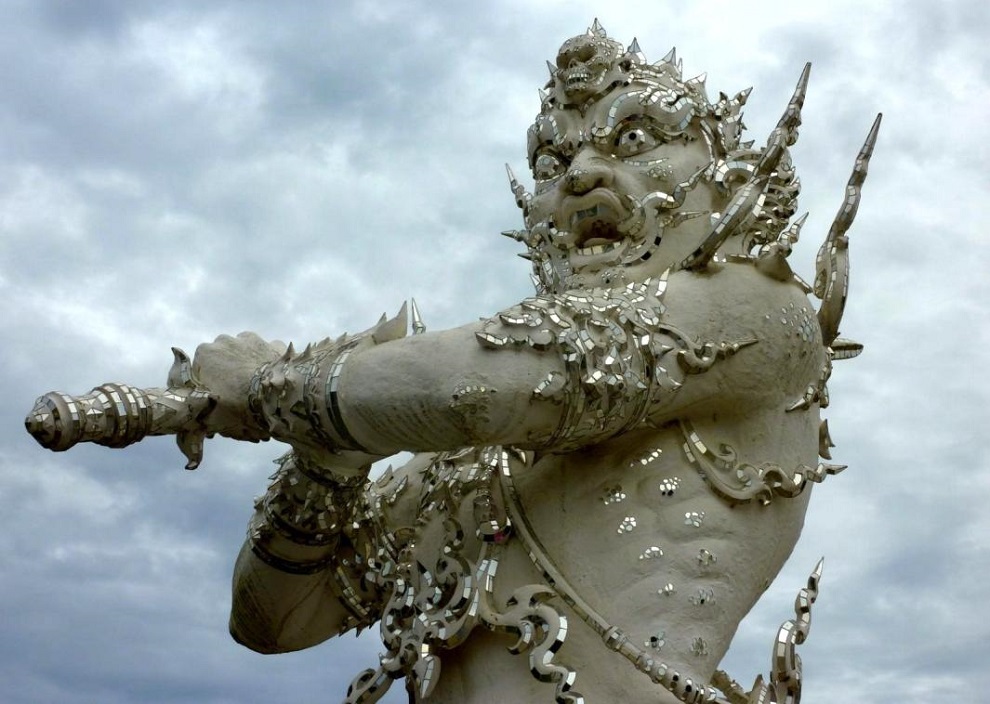
Every detail of the temple carries meaning and encourages the visitor to reflect on the Buddhist teachings that show the way to escape from the worldly temptations, desires and greed and focus on the mind instead.
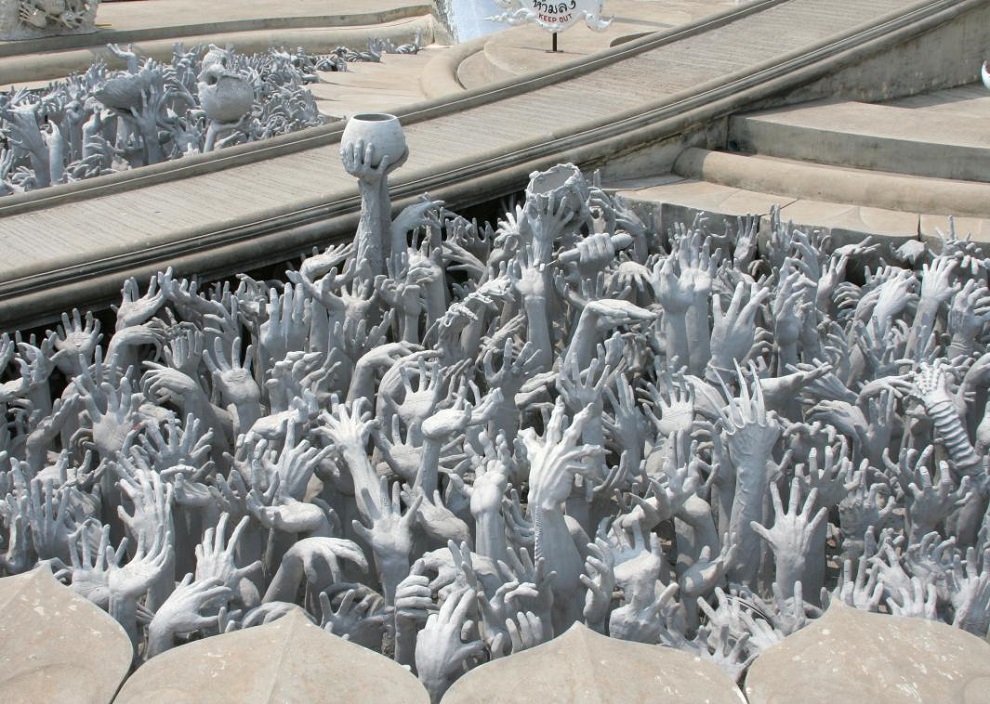
The ubosot, the main building of the white temple, is reached by crossing a bridge over a small lake. In front of the bridge is a circular area with hundreds of reaching hands that symbolize desire. This area represents human suffering and hell. The bridge towards the ubosot, called the bridge of “the cycle of rebirth” signifies the crossing over from the cycle of death and rebirth into a state free of suffering. It symbolizes the way to happiness by overcoming worldly things as temptations, greed and desire. Next to the lake stand two very elegant Kinnaree, a creature from Buddhist mythology, half human, half bird.
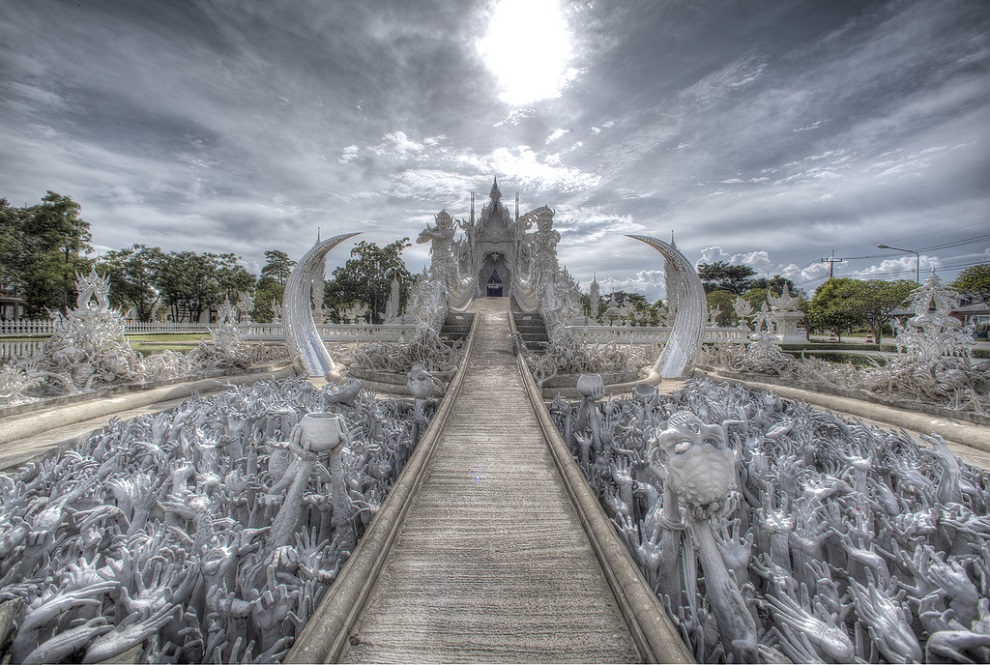
After crossing the bridge the visitor arrives at the “Gate of Heaven” guarded by two huge creatures that represent Death and Rahu, who decides over men’s fate. At the end of the bridge in front of the ubosot are several Buddha images in meditation.
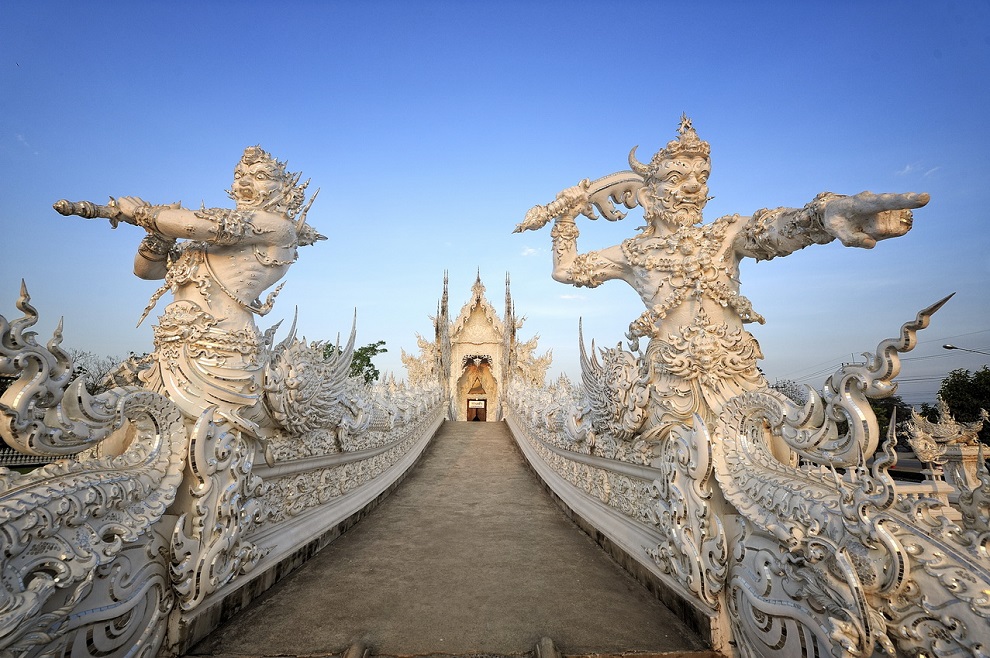
The most important building of the Wat Rong Khun, the ubosot is an all white building with fragments of reflective glass in the plaster. The very ornate ubosot shows some design elements of classic Northern Thai temples like the three tiered roof and stylized Naga serpents on the bargeboards.
Whereas the murals of many old temples depict scenes from Buddhist stories, the walls of the white temple contain colorful murals that depict modern representations of good and evil, contemporary figures like Batman, Spiderman and Elvis, villains and superheroes from movies and comics and even spaceships. On the back wall of the ubosot is a golden mural of the Buddha, a few images of the Buddha in front of it.
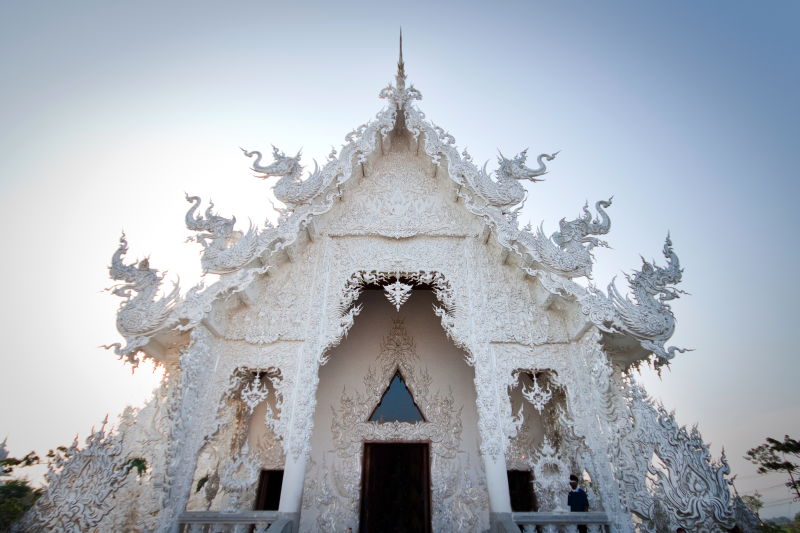
A structure that stands out because of its color is the rest rooms building. Another very ornately decorated structure, this golden building represents the body, whereas the white ubosot represents the mind. The gold symbolizes how people focus on worldly desires and money. The golden building represents the idea to make merit and to focus on the mind, instead of material things and possession.



































